Table of Contents
The Best Herbs for Vaporizing: A Complete Guide to Dry Herb Vaporization
When most people think of vaporizing herbs, cannabis comes to mind. But dry herb vaporizers can be used for much more — from lavender and chamomile to peppermint and blue lotus, the herbal world is full of plants that offer calm, clarity, energy, and breath support without smoke or harsh combustion.
This guide explores the top 10 herbs to vaporize for wellness, flavor, and functional effect. Whether you’re looking to relax before bed, clear your mind before work, or build a microdosing ritual with botanicals, dry herb vaporization offers a clean, effective, and customizable path to herbal support.
You'll also learn how vaporization works, which temperatures extract the most benefit, and how to prepare your herbs properly — especially with analog tools like the Vapman Click or Lotus Vaporizer.
1. How Herb Vaporization Works
Vaporization is the process of gently heating herbs to a temperature hot enough to release their active compounds as vapor — but without burning the plant material. This typically happens between 130–220°C (266–428°F), depending on the herb and desired effect.
By avoiding combustion, you skip the harmful byproducts of smoke (tar, carbon monoxide, ash) and instead inhale only the essential oils and volatile compounds that give herbs their effect, scent, and flavor.
Benefits of vaporizing herbs:
- Cleaner delivery: No smoke, just pure botanical vapor
- Immediate onset: Feel the effects within seconds
- Flexible dosing: Take one draw or build the session gradually
- Layered effect: Target specific compounds with temperature control
Devices like the Vapman and Lotus are particularly well-suited for herbal vaporization. They offer flame-powered control, no batteries, and clean, full-flavor extraction using only wood, copper, mica, and stainless steel — no plastic, no electronics, just your breath and the plant.
2. Top 10 Best Herbs for Vaporizing
1. Lavender (Lavandula angustifolia)
Benefits: Calming, anti-anxiety, promotes relaxation and sleep
Ideal temperature: 125–130°C (257–266°F)
Lavender is ideal for evening sessions or pairing with other herbs to reduce stress and promote tranquility. Its floral aroma is soothing and gentle.
2. Chamomile (Matricaria chamomilla)
Benefits: Relaxing, stomach-soothing, anti-inflammatory
Ideal temperature: 190°C (374°F)
Best known as a tea, chamomile is also vapor-friendly. Its mild sedative properties make it useful for winding down or calming the gut-brain axis.
3. Peppermint (Mentha piperita)
Benefits: Uplifting, decongesting, energizing
Ideal temperature: 160°C (320°F)
Peppermint opens the lungs and clears the mind. It’s great in the morning or before focused work — and excellent for mixing with grounding herbs like damiana or blue lotus.
4. Damiana (Turnera diffusa)
Benefits: Mild euphoria, relaxation, aphrodisiac
Ideal temperature: 175–185°C (347–365°F)
Known for its sensual, softening qualities, damiana is popular in blends that support embodiment, pleasure, and meditative introspection.
5. Blue Lotus (Nymphaea caerulea)
Benefits: Calm, dreaminess, heart-opening
Ideal temperature: 175–185°C (347–365°F)
This flower of ancient Egypt is gaining renewed attention. Vaporizing blue lotus produces subtle shifts in mood and perception — ideal for gentle evening rituals or breathwork.
6. Lemon Balm (Melissa officinalis)
Benefits: Stress relief, focus, mild antiviral
Ideal temperature: 142°C (288°F)
A member of the mint family, lemon balm has a slightly sweet, citrusy flavor and a calming but clear-headed effect. Perfect for midday clarity or paired with peppermint for uplift.
7. Mullein (Verbascum thapsus)
Benefits: Lung support, expectorant, base herb
Ideal temperature: 160–175°C (320–347°F)
Mullein is one of the best herbs for supporting respiratory health. It’s often used as a filler or base in herbal blends and works great for smoothing the vapor profile.
8. Sage (Salvia officinalis)
Benefits: Antiseptic, mood-clearing, spiritual cleansing
Ideal temperature: 180–190°C (356–374°F)
Used in many cultures for purification, sage has a strong, earthy flavor and an energizing effect. Use in moderation or blend with milder herbs to balance the intensity.
9. Green Tea (Camellia sinensis)
Benefits: Alertness, antioxidant-rich, mental clarity
Ideal temperature: 175–185°C (347–365°F)
Vaporizing green tea offers a different kind of caffeine experience — light, uplifting, and jitter-free. Often paired with mint or lemon balm for a more complex session.
10. Hops (Humulus lupulus)
Benefits: Sedative, anxiety-reducing, sleep-supporting
Ideal temperature: 160–175°C (320–347°F)
Hops aren’t just for beer — they’re a potent herb for relaxation. With their earthy bitterness and calming profile, they’re ideal for vaporizing before bed or during long restorative sessions.
3. Tips for Preparing and Using Vaporizer Herbs
Vaporizing herbs requires a slightly different approach than combusting or infusing them. Follow these tips to ensure maximum flavor, efficiency, and enjoyment:
3.1 Use Quality Herbs
- Always use herbs that are organic, food-grade, and pesticide-free
- Purchase from reputable apothecaries or grow your own
- Avoid overly damp or old herbs — they don’t vaporize well
3.2 Grind Gently
- Grind dry herbs just before use to preserve aroma
- Use a coarse to medium grind — not too fine, especially for convection vaporizers like the Lotus
- For delicate herbs (e.g. petals), you may only need to crush them lightly by hand
3.3 Dose Lightly at First
- Start with a small amount (e.g. 0.05g–0.1g)
- Take a few slow, gentle draws — observe the effect, then continue if needed
- Some herbs like hops or sage are strong — blend or use sparingly
3.4 Clean Your Device Often
To preserve flavor and avoid cross-contamination, clean your bowl and vapor path regularly. Use a dry brush after each session and deep clean with isopropyl alcohol every 5–10 uses, depending on material buildup.
Need guidance? Visit our full cleaning guide:
→ How to Clean Your Vaporizer for Peak Performance
4. Suggested Pairings & Blends
One of the joys of herbal vaporization is creating custom blends that combine flavors, effects, and intentions. Here are a few popular pairings and their uses:
Relaxation Blend
- Chamomile (calming)
- Lavender (soothing)
- Blue Lotus (dreamy, heart-opening)
- Use before bed, during breathwork, or for gentle emotional reset
Focus & Clarity Blend
- Green Tea (mental energy)
- Lemon Balm (calm alertness)
- Peppermint (uplifting, clears fog)
- Perfect for daytime use or creative tasks
Sensory Ritual Blend
- Damiana (body awareness)
- Mullein (smooths blend, lung support)
- Rose petals or Blue Lotus (aromatic and balancing)
- Ideal for slow weekends, intimacy, or solo ceremony
Experiment in small batches. Journal your effects. Let your intuition lead — and remember that vaporizing herbs is about resonance, not intensity.
Conclusion
Dry herb vaporization is more than a technique — it’s a gateway to deeper connection with nature, breath, and self. By choosing the right herbs, temperatures, and combinations, you can turn every session into a tailored botanical ritual.
Whether you're seeking clarity, calm, or creativity, there's a plant that meets you there. And with the help of a clean, flame-powered vaporizer like the Vapman Click or Lotus, you can explore those effects with purity, precision, and purpose.
Take it slow. Try new pairings. Tune into what each inhale offers — and discover just how vast the herbal world can be when you vaporize with intention.
→ Shop handcrafted vaporizers made for herbal exploration
About the Author

Author: Michael Mussner, Founder of INHALE Vaporizers
Michael is a passionate vaporizer designer and entrepreneur from South Tyrol, driven by craftsmanship, sustainability, and the mindful use of natural herbs. With a background in product innovation and a love for analog technology, he founded INHALE to revive flame-powered vaporizers like the Vapman and Lotus. Every product he creates is deeply rooted in authenticity, simplicity, and a respect for nature.
Questions? Contact us here or email support@nowinhale.com.






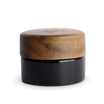
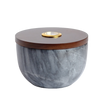
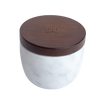
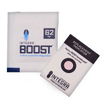
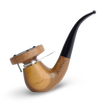





Leave a comment
All comments are moderated before being published.
This site is protected by hCaptcha and the hCaptcha Privacy Policy and Terms of Service apply.